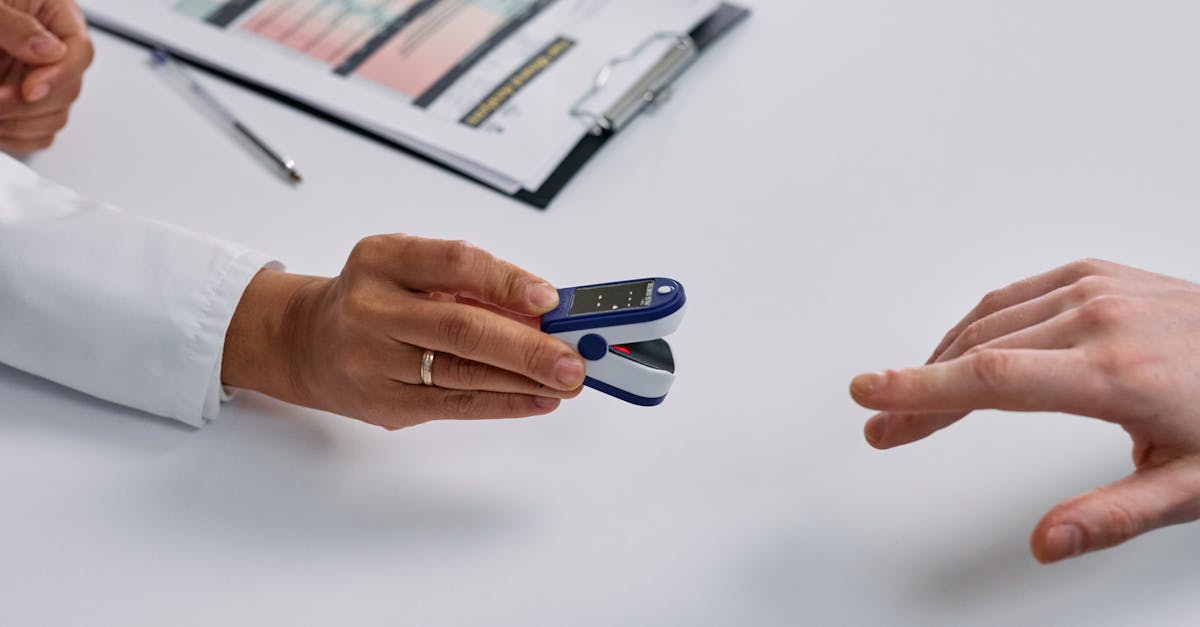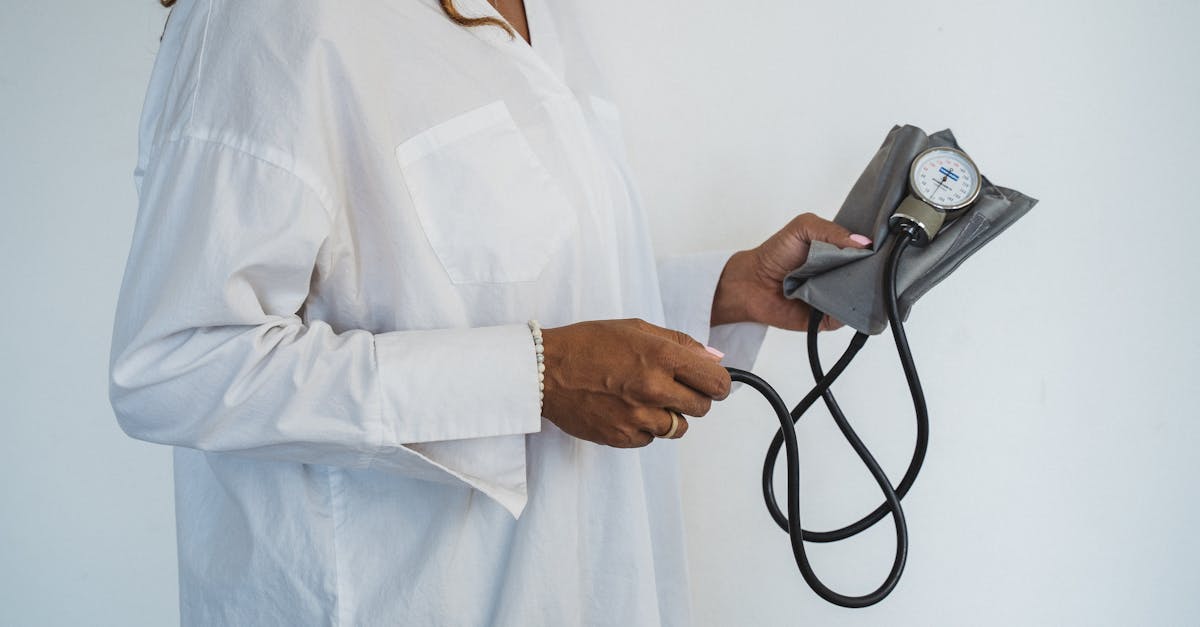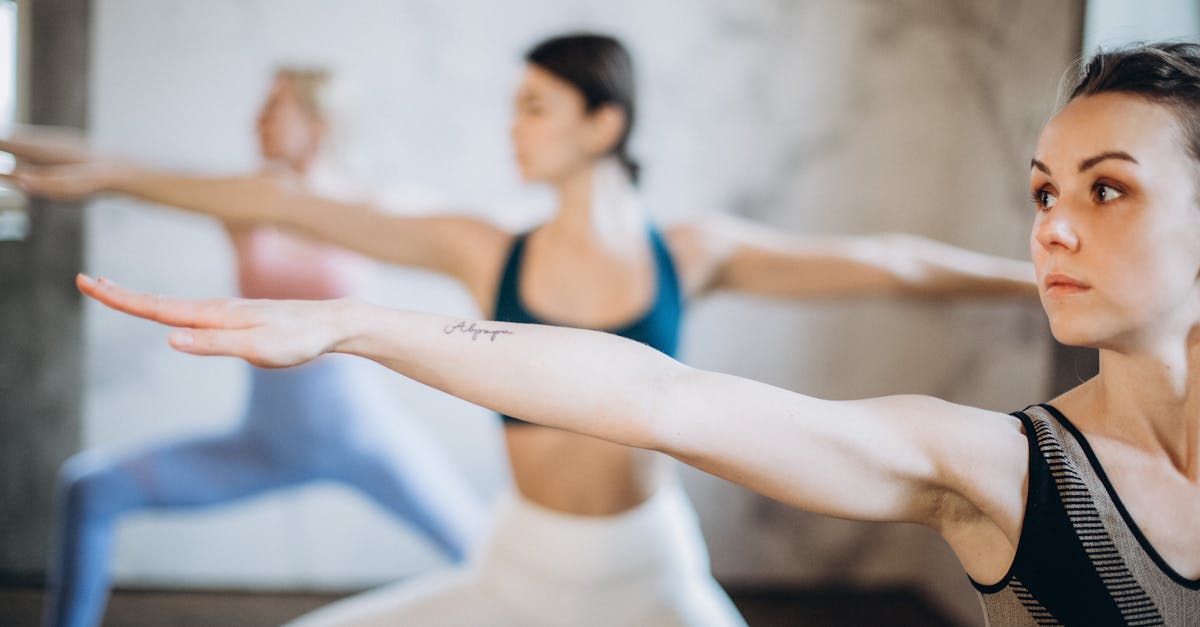Dealing with frozen shoulder pain and restricted mobility?
In Short: Frozen shoulder causing you discomfort? Discover effective strategies for relieving
shoulder pain
and restoring mobility with the innovative techniques from Pulse Align. Our approach focuses on improving range of motion and alleviating stiffness, allowing you to move with ease and confidence. Experience the benefits of enhanced
shoulder pain relief
through gentle exercises targeting the root causes of discomfort. Reclaim your health and wellness at Pulse Align Clinics. Book your appointment today!
Are you struggling with lower back pain and poor posture?
Exploring
Pulse Align Techniques
: A Promising Path to
Relieve Frozen Shoulder
and Restore Mobility highlights effective strategies to combat the debilitating effects of
shoulder pain
. By targeting the root causes of conditions like
frozen shoulder
and
shoulder pain from playing sports
, these innovative methods aim to promote
shoulder pain relief
and enhance overall mobility. With a focus on tailored
shoulder pain exercises
and holistic healing practices, Pulse Align not only provides tools to alleviate discomfort but also to empower individuals in their journey towards recovery and better posture.

Exploring Pulse Align Techniques: A Promising Path to Restore Mobility
In our pursuit of a balanced and harmonious life, posture improvement and general well-being are essential. At the forefront of these goals is the innovative method offered by Pulse Align, focusing on neuromuscular recalibration to foster natural bodily function. This approach serves not only to enhance posture but also to create a nurturing environment that supports clients on their journey to optimal health.
Understanding the Pulse Align Approach
Pulse Align utilizes gentle stimulation techniques to recalibrate muscle tone, fostering natural balance and harmony within the body. This innovative methodology prioritizes a holistic path to well-being, aiming to create muscle symmetry that encourages overall health. Rather than targeting discomfort directly, our focus lies in promoting balanced physical function that may naturally lead to enhanced comfort.
The Holistic Benefits of Gentle Stimulation
Our holistic approach positions Pulse Align as a top choice for individuals seeking overall wellness. By enhancing muscle tone and encouraging proper alignment, clients frequently discover enhancements in their daily functionality. Many experience improved postural balance and a heightened sense of well-being as their bodies respond positively to this gentle technique. With testimonials highlighting experiences of improved posture and reduced tension, it becomes evident that our unique methods support the body’s intrinsic abilities.
Experience the Pulse Align Difference Today
Are you ready to explore how Pulse Align can support your journey toward a more balanced life? We invite you to learn more about our techniques and how they can benefit you and your family. Find a Pulse Align clinic near you in Montreal, La Prairie, Terrebonne, Chicoutimi, Charlesbourg, Saint-Jérôme, Châteauguay, Sainte-Marie, Les Escoumins, Granby, or Panama City and schedule your consultation today. To understand our unique approach better, please visit Pulse Align’s website and discover how we may help you restore balance naturally.
Please note that while Pulse Align complements existing healthcare services, we do not replace them. We encourage collaboration with your healthcare team to ensure the highest quality of care as you explore our techniques.
Exploring Pulse Align Techniques: A Promising Path to Relieve Frozen Shoulder and Restore Mobility
- Neuromodulation Techniques: Addressing the interplay between nerves and muscles for effective relief.
- Gentle Recalibration: A holistic method designed to restore shoulder function.
- Targeted Exercises: Tailored activities aimed at enhancing mobility and reducing stiffness.
- Client Success Stories: Inspiring testimonials from individuals in Montréal, Mont-Royal, and Terrebonne.
- Root Cause Identification: Understanding underlying issues to provide long-term solutions.
- Ice Application: Employing cold therapy to minimize inflammation and alleviate pain.
- Stretching Exercises: Essential routines for thawing the frozen shoulder and improving range of motion.

Exploring Pulse Align Techniques: A Promising Path to Relieve Frozen Shoulder and Restore Mobility
Frozen shoulder, known for its debilitating pain and immobilizing stiffness, affects countless individuals, compromising their daily activities. Fortunately, at Pulse Align, innovative techniques are now available for those seeking effective shoulder pain relief. By embracing a holistic approach that integrates modern methodologies, individuals can unlock new levels of comfort and mobility. From neuromuscular health practices to specialized shoulder pain exercises, this article highlights how the unique offerings of Pulse Align can transform lives.
The Importance of Holistic Recalibration
Holistic recalibration integrates various healing modalities to address the underlying causative factors of conditions such as frozen shoulder. Pulse Align focuses on removing barriers to movement caused by issues like shoulder impingement or bursitis, all while promoting an individualized recovery experience. Techniques in this approach actively engage the nervous system for improved balance and movement, facilitating not just pain management but a genuine restoration of freedom in shoulder mobility.
Effective Shoulder Pain Exercises
At Pulse Align, a variety of specially designed shoulder pain exercises are implemented to enhance flexibility and strength. These exercises are tailored for individuals suffering from rotator cuff injuries or the discomfort associated with frozen shoulder. Focusing on both active and passive movements, clients engage in strategies that maintain symmetry in the body while alleviating pain. Ideal exercises may include wall stretches, external rotations, and doorway stretches, each selected to maximize improvement without compromising safety.
Addressing Frozen Shoulder Pain Naturally
Understanding the natural remedies for shoulder bursitis and shoulder tendinitis sets the foundation for comprehensive care. Incorporating modalities such as shockwave therapy can further enhance recovery by stimulating healing processes within tissues. Clients are encouraged to engage in consistent wellness practices that include mindful stretches and relaxation techniques, facilitating a more balanced approach to shoulder health. Additionally, awareness of shoulder pain causes can empower individuals to take proactive measures in their healing journey.
Posture Correction and Core Strengthening
One of the keys to improving shoulder health is effective posture correction. As posture directly impacts the shoulder’s alignment, appropriate adjustment of stance and positioning reduces strain and fosters long-term recovery. Alongside posture correction, implementing trunk exercises enhances core strength, providing vital support for shoulder function. Routinely integrating these exercises can mitigate issues, particularly for those experiencing shoulder pain when lifting their arms.
Incorporating These Techniques into Daily Life
Finding ways to easily integrate exercises into everyday routines enhances the likelihood of consistent practice. For example, simple in-office stretches or strategically timed break routines at home can promote healing without overwhelming one’s schedule. Consultations with Pulse Align practitioners help individuals tailor their journeys based on personal needs and barriers.
As you explore the promising path offered through Pulse Align’s innovative techniques, consider adopting their neuromuscular health strategies for optimal recovery and mobility. Booking a consultation today can pave the way for personalized care, equipping you with the tools necessary to reclaim comfort in every facet of life.
Exploring Pulse Align Techniques: A Promising Path to Relieve Frozen Shoulder and Restore Mobility
| Aspect of Comparison | Pulse Align Techniques |
|---|---|
| Focus on Mobility | Emphasizes improving shoulder flexibility and range of motion through gentle exercises. |
| Holistic Approach | Takes into consideration overall body wellness, aiming for balance and harmony. |
| Natural Methods | Utilizes non-invasive techniques that encourage the body’s natural healing processes. |
| Personalized Techniques | Offers tailored guidance based on individual needs, promoting self-awareness in movement. |
| Gentle Recalibration | Focuses on gently retraining shoulder function to restore natural movement patterns. |
| Symptom Relief | Aims to alleviate discomfort through supportive exercises rather than traditional treatment methods. |
| Education and Awareness | Empowers individuals with knowledge about their body mechanics and shoulder health. |
| Community Support | Creates a network of individuals sharing similar experiences for motivation and shared learning. |
| Long-Term Wellness | Encourages sustainable practices to maintain shoulder health and overall physical wellbeing. |
| Connection with Body | Fosters a mindful approach to movement, helping individuals connect with their physical selves. |

Transformative Wellness Journeys: Client Experiences with Pulse Align
In the beautiful city of Mont-Royal, a client shared their inspiring journey of overcoming frozen shoulder pain with the help of Pulse Align. “I had struggled with stiffness and discomfort for months,” they recounted. “After just a few sessions, I began to notice a significant reduction in my pain levels. The unique techniques allowed my body to naturally recalibrate, bringing me back to a state of balance and well-being.”
Clients from Terrebonne have also reported remarkable improvements in their mobility. One individual stated, “Thanks to Pulse Align, I can now move my arm freely without experiencing that persistent pain. The holistic approach truly supports the body’s natural ability to restore itself.” This sentiment resonates with many who seek effective relief in their wellness journey.
In Deux-Montagnes, clients are praising the gentle techniques employed at Pulse Align. “I appreciated how the staff integrated a holistic perspective into my recovery process,” shared one client. “The therapies not only addressed my shoulder pain but also improved my overall health.” Such testimonials highlight the importance of maintaining a dynamic balance within the body.
Clients in Sainte-Marie have found immense value in reestablishing their comfort and mobility through Pulse Align’s dedicated support. “I never believed I could regain so much function in my shoulder,” a satisfied client exclaimed. “The compassionate guidance provided by the team made a world of difference in my healing journey.”
In various locations, including Châteauguay and Saint-Jérôme, Pulse Align continues to flourish as a trusted ally in wellness. “For those dealing with shoulder discomfort, this clinic offers a path to recovery that feels natural and empowering,” a local client remarked. Witnessing firsthand the transformative capabilities of Pulse Align, many individuals are motivated to embark on their path toward improved body function.
If you are in search of solutions to reclaim your health and mobility, consider exploring the offerings from Pulse Align. Their commitment to working alongside healthcare teams ensures that clients and their families are supported throughout their wellness journey. Discover more about their locations and services at Our Clinics.
Understanding Frozen Shoulder
Frozen shoulder, or adhesive capsulitis, is a painful condition marked by significant stiffness and limitations in shoulder mobility. It typically involves intense pain and restricted movement, impacting daily activities and overall quality of life. Addressing frozen shoulder through natural methods can greatly enhance comfort and promote mobility.
Simple Techniques for Relief
Pulse Align offers expert advice on how to relieve frozen shoulder pain naturally. By employing effective techniques, individuals can improve their daily comfort and regain mobility. The goal is to ensure that pain does not hinder one’s ability to enjoy life fully.
Promoting Shoulder Mobility
Discover targeted shoulder pain exercises specifically designed to enhance mobility and improve posture. Pulse Align focuses on offering a unique approach that emphasizes relief from frozen shoulder and associated conditions like rotator cuff injuries. Clients can engage in gentle techniques that strengthen muscles and restore comfort.
Innovative Solutions for Shoulder Pain
Pulse Align takes pride in presenting a holistic method to alleviate shoulder discomfort. Utilizing advanced therapies such as neuromodulation and shockwave therapy, the clinic targets the root causes of conditions while providing patients with tailored solutions to enhance mobility and overall comfort.
Effective Strategies for Pain Relief
To combat frozen shoulder, Pulse Align recommends five proven tips aimed at alleviating discomfort and encouraging mobility. The expert-backed strategies incorporate practical advice and tailored techniques designed to guide individuals towards a pain-free existence.
Understanding Adhesive Capsulitis
Adhesive capsulitis is characterized by restricted shoulder movement, leading to symptoms of pain and stiffness in the joint. The initial treatment goals focus on relieving discomfort while improving the range of motion through targeted activities and stretching exercises, which are essential for thawing the frozen shoulder.
Our Mission
At Pulse Align, our mission is to deliver evidence-based, client-centered treatments that address the underlying causes of pain and dysfunction. By integrating advanced techniques and technologies, we strive to empower each person to take control of their health, ensuring a high standard of care, lasting relief, and an improved quality of life.
Transform Your Life with TAGMED’s Advanced Spinal Decompression Technology
TAGMED offers a revolutionary, non-surgical solution for individuals suffering from chronic pain associated with conditions such as herniated discs, bulging discs, and spinal stenosis. TAGMED’s specialized Spinal Decompression Therapy gently reduces pressure on the affected discs and nerves, enhancing mobility, alleviating pain, and supporting your body’s natural healing process. If you have reached a plateau with other therapies, discover how TAGMED’s evidence-based decompression approach can help you reclaim an active and comfortable life.
Have you tried conventional treatments and still struggle with persistent back pain due to a severe disc condition?
Mechanism of Action
TAGMED’s neurovertebral decompression applies a controlled, progressive traction force to the spine. This technique increases the space between vertebrae, thereby relieving pressure on intervertebral discs and nerve roots. The method promotes improved fluid circulation in the targeted area, lowering inflammation, and relieving pain. This process not only promotes healing but also offers a reliable, non-invasive solution for individuals grappling with chronic back pain.
Specific Benefits
The non-invasive nature of TAGMED’s approach effectively alleviates chronic pain and symptoms linked to conditions such as herniated discs or spinal stenosis. By reducing pressure on nerve structures and optimizing fluid circulation around the discs, TAGMED facilitates a faster recovery and enhances the quality of life for patients seeking relief from persistent discomfort. This therapy is especially beneficial for those dealing with sciatica, degenerative disc disease, and facet syndrome, providing a holistic pathway toward healing.
Comparison with Other Treatments
When compared to traditional treatment methods such as pain medications, corticosteroid injections, or surgical options, TAGMED’s neurovertebral decompression technology stands out. Patients can experience significant pain relief without invasive interventions and minimized medication-related risks. It allows for a potentially quicker path to recovery, appealing to those seeking safer, evidence-based alternatives. Unlike conventional physiotherapy, which may not address the root cause of pain, this innovative solution focuses on long-lasting results.
Case Studies or Testimonials
Real-world examples illustrate the profound impact of TAGMED’s neurovertebral decompression. Many patients have reported lasting pain relief and a quicker return to daily activities after undergoing treatment. Testimonials emphasize the reduced dependence on pharmaceuticals, showcasing the therapeutic approach’s tangible results and practical advantages. By sharing firsthand accounts, readers can appreciate how TAGMED’s technology has transformed lives, particularly for those suffering from conditions like disc herniation and foraminal stenosis.
Conclusion: A Path Towards Relief and Mobility with Pulse Align
If you are navigating the challenges posed by frozen shoulder, embracing the techniques offered by Pulse Align could be a transformative step in your wellness journey. The strategies employed focus on posture correction, facilitating improved comfort while fostering a sense of well-being.
By harnessing a holistic health approach, clients have experienced remarkable shifts in their mobility and reduction in discomfort. The gentle, non-invasive methods at Pulse Align emphasize supporting the body’s innate healing capabilities, enabling individuals to regain their strength and embrace life fully.
Clients consistently share positive experiences, noting enhanced quality of life and improved posture as direct benefits of their journey with us. It’s inspiring to witness the empowerment that stems from a natural path towards pain relief.
Don’t wait to discover the difference that Pulse Align can make in your life. Schedule your consultation now to begin your journey towards a more balanced and comfortable existence. Embrace this opportunity to enhance your wellness and unlock your natural potential for healing.
Take action towards a brighter, more mobile future—embrace the possibilities with Pulse Align today!

Do you suffer from a chronic condition that responds little or not at all to conservative treatments?
At Pulse Align, we proudly introduce a truly innovative and non-invasive method designed to restore the body’s natural balance and enhance posture through gentle, imperceptible pulses. This unique technique aims to alleviate muscle and joint tension in a holistic manner, inviting individuals to embark on a natural journey toward improved well-being.
What sets Pulse Align apart is its focus on helping the body recalibrate itself naturally. By engaging in this gentle and supportive approach, clients often report significant improvements in comfort and posture, enhancing their overall quality of life. Rather than addressing specific discomfort directly, Pulse Align’s methods are designed to promote well-being through the body’s own innate abilities.
Our personalized approach ensures that each client’s experience is tailored to their specific needs. Testimonials from those who have engaged with Pulse Align reflect notable improvements in neck and back tension, as well as greater feelings of well-being. Clients have shared inspiring stories about how they have felt uplifted after their sessions, embracing a newfound sense of balance in their lives. This focus on individualized care embodies our commitment to enhancing wellness for all.
We welcome you to explore the wealth of information available on our website and find a Pulse Align location near you, whether you’re in La Prairie, Mont-Royal, Terrebonne, or beyond. Our services are crafted to be a complement to your existing healthcare regime, ensuring that clients remain under the guidance of their healthcare team while experiencing the benefits of our techniques. This approach is suitable for individuals of all ages, fostering a family-oriented environment to nurture well-being for everyone.
To learn more about our services and book an appointment, visit our website: Pulse Align. Here you will find details about our cutting-edge technology, designed to restore muscle tone symmetry and help reduce tension effortlessly. With our safe, non-invasive, and family-friendly practices, we invite you to embark on your wellness journey with us today.
Frequently Asked Questions
Shoulder Pain
Can manual therapy by a therapist help?
Yes, it can improve mobility, reduce muscle tension, and restore better shoulder function.
Can rheumatoid arthritis affect the shoulder?
Yes, rheumatoid arthritis, an inflammatory disease, can affect the shoulder causing pain and stiffness.
Is heat or cold effective for shoulder pain?
Cold reduces inflammation and acute pain, while heat relaxes muscles and relieves stiffness.
Is complete rest recommended?
Not necessarily. Complete immobilization can stiffen the joint. Gentle, controlled movement is often beneficial.
Do pectoral stretches help relieve shoulder pain?
Yes, tight pectorals pull the shoulder forward. Stretching them can help rebalance posture.
Are throwing sports more at risk for shoulder problems?
Yes, repetitive throwing (baseball, handball) heavily stresses the rotator cuff, raising injury risk.
Can I prevent shoulder pain?
By maintaining good posture, strengthening the rotator cuff, avoiding excessive repetitive motions, and warming up before exercise.
How do I know if my shoulder pain is serious?
If the pain lasts several weeks, severely limits movement, or is accompanied by swelling, redness, or deformity, seek medical attention.
What is shoulder osteoarthritis?
Shoulder osteoarthritis is the progressive wear of joint cartilage, causing pain, stiffness, and reduced mobility.
Do stretches help relieve shoulder pain?
Regular, gentle stretching can improve joint flexibility and reduce muscle tension around the shoulder.
Adam Blanc understands that shoulder pain can do more than slow you down—it can impact your entire quality of life. As a Shoulder Pain Awareness Advocate at Pulse Align, he’s dedicated to showing readers that genuine relief is not just possible, but within reach. Drawing on the latest research, Adam combines expert insights with compassionate guidance, inspiring people to move toward greater comfort and mobility. His approach is about more than just managing symptoms; it’s about empowering individuals to rediscover their strength and embrace every moment, free from the constraints of pain.
Medical Disclaimer
The information and advice provided on this site do not replace the advice, diagnosis, or treatment of a healthcare professional. Please note that the author of this article is neither a doctor nor a specialist in a medical specialty as defined by the Collège des médecins du Québec. Manual medicine, functional medicine, and sports medicine as described on this site exclude any medical treatment or diagnosis made by a doctor or medical specialist. Always consult your doctor for any medical questions. For more details, please read our complete Legal Notice.




